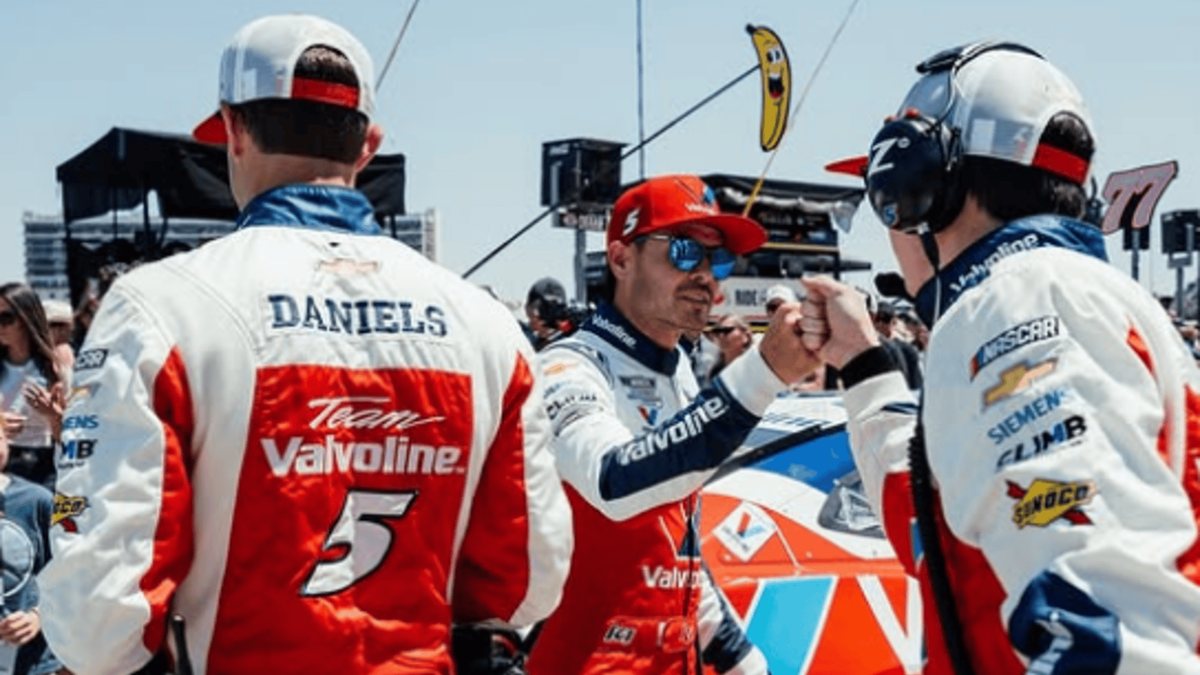

“Wish I could go back,” Kyle Larson wrote on X with regret. “I didn’t get the push I needed on that restart, and it cost me,” he said after the race at Texas Motor Speedway. Piloting the No. 5 Chevrolet, Kyle Larson was the standout, leading 90 laps and clinching a record-setting Stage 2 win—his sixth at Texas. The race, marked by 15 lead changes among 11 drivers and 10 cautions totaling 65 laps, was chaotic at best. And a restart with under 25 laps to go shattered Larson’s victory hopes. Fans erupted on social media, accusing Michael McDowell of jumping the start, sparking a firestorm of controversy.
Watch What’s Trending Now!
McDowell getting the lead on a restart and changing the dynamic of the race prompted NASCAR Managing Director of Racing Communications, Mike Forde, to step in with a definitive response. Forde is leveraging advanced in-car camera technology to dismantle the false start allegations and reveal the precision behind the race control’s call.
ADVERTISEMENT
Mike Forde explains the in-house technology used for unbiased racing
It all went down on a restart with 23 laps to go, after a caution triggered by Carson Hocevar collected Ryan Preece and Cody Ware. McDowell was on the top lane for the restart with Tyler Reddick behind him and Larson on the inside ahead of Ryan Blaney. McDowell got a huge jump on Larson at the restart, and it almost seemed like he had to have started early. However, if we look closely, it was Tyler Reddick who gave McDowell a much-needed push while Blaney was too far behind Larson on the inside to help the #5. Hindsight is always 20/20, and at the moment, fans were upset and felt that McDowell mashed his gas early.
However, Mike Forde’s detailed explanation shut down the debate. “We now have access to that [in-car cameras] in race control,” Forde said on the Hauler Talk podcast. “The cool part is that we use that as our tool to help us officiate restarts. You’ll hear sometimes over the official channel, ‘restart under review.’ When that happens, what the folks at the tower—Elton Sawyer, Brad Moran, the NASCAR Cup Series managing director, John Probst, if he’s up there—someone would be looking at that in-car camera.” The in-car camera system, now a mandatory fixture in all Cup Series cars under NASCAR’s rulebook, has transformed officiating. Two years ago, race control lacked real-time access, relying on post-race reviews that delayed justice.
A 2023 incident at Texas Motor Speedway, when William Byron was reprimanded for intentionally spinning out Denny Hamlin, prompted NASCAR to overhaul its officiating tech after delayed in-car footage cleared Byron. That controversy exposed the race control’s lack of real-time camera access, fueling distrust. The 2023 incident was a turning point, pushing NASCAR to integrate live feeds into race control soon after. Forde went on to explain how the in-car cameras are used to determine the restart.
ADVERTISEMENT
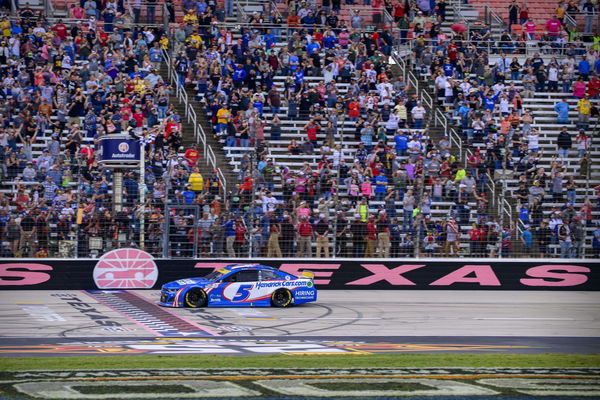
USA Today via Reuters
Oct 17, 2021; Fort Worth, Texas, USA; NASCAR Cup Series driver Kyle Larson (5) takes the checkered flag as he wins the Autotrader EchoPark Automotive 500 in the NASCAR round of 8 opening race at Texas Motor Speedway. Mandatory Credit: Jerome Miron-USA TODAY Sports
“They pull up the second row’s camera, and they kind of take the driver’s seat. They’re pretending they’re sitting in either P3 or P4, so that they can see the front two cars, whether they go, if they jump the restart button. The control car, so in this case the 5, wants to make sure that the control car launches first, then the 71 [Michael McDowell] will go. So, in our view, using that, very, very close. No doubt about it. We looked at it as they’ll launch pretty much at the same time, and… that we felt comfortable calling. It was no harm, no foul in a way.” Forde’s words, backed by live footage, confirmed Larson and McDowell launched simultaneously, ruling out any foul play.
ADVERTISEMENT
By lap 248, when McDowell led under caution, officials like Sawyer and Moran used these cameras to monitor the restart with a driver’s-eye view. The Spire Motorsports driver, starting fifth in the No. 71 Chevrolet, had led eight laps with a best time of 28.799 seconds (187.507 mph) on lap 246. A strategic two-tire stop on lap 220, clocking 4.48 seconds, gave him the edge for the final push, and Tyler Reddick’s bump was the icing on the cake.
However, it was not all gloom for McDowell, who got hunted down by Joey Logano and Ryan Blaney as the laps dwindled. The Penske duo gave it their all, and Blaney even had the lead at one point, but chose the wrong lane on another late restart as McDowell surged ahead. However, it was Joey Logano who eventually took the lead after a huge block by McDowell. Eventually, the latter spun out after Ryan Blaney overtook him for second, ending what was a remarkable run for the #71.
Top Stories
‘RIP’: NASCAR World Crumbles in Tears as 39-YO Former JR Motorsports Driver Passes Away
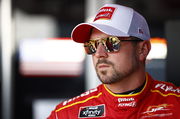
France Family’s ‘Financial Deception’ Spilled Out in the Open as RTA Memo Exposes the ‘49%’ Lie
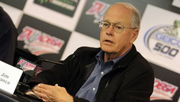
55-YO NASCAR Driver’s Untimely Death Shatters Racing Community
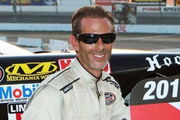
NASCAR President Kicks Up ‘SRX’ Firestorm With Courtroom Claim Fans Refuse to Accept
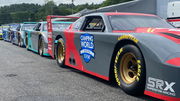
Dale Earnhardt & Tony Stewart Dethroned as SVG Shatters NASCAR Benchmark to Stand Alone in History
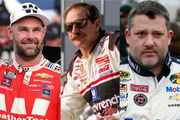
ADVERTISEMENT
Late restarts ruined it for Kyle Larson
Kyle Larson’s earlier dominance was undeniable. By lap 159, he led with Tyler Reddick 0.357 seconds behind, fending off challenges from Ty Gibbs and Chris Buescher. His Stage 2 win on lap 165, edging out Reddick and Alex Bowman, marked his 68th career stage victory. Earlier, on lap 190, Larson overtook William Byron for the lead in Turn 3, with Gibbs snagging second. However, the race’s intensity was relentless, with 10 cautions disrupting the flow. Larson is a driver who excels under long green flag runs, and Texas’ stop-start nature eventually led to the #5’s downfall.
Restarts were a recurring challenge at Texas last week. Reddick, who climbed to second by lap 134 after overtaking Ryan Preece, called Texas restarts “brutal”. “The track’s so wide, it’s easy to misjudge your timing,” he said. Ross Chastain, a restart specialist, said he studies in-car footage as a “secret weapon,” highlighting the cameras’ value beyond officiating. Chastain has gained more positions than any driver on restarts this Cup Series campaign, and his prowess showed as he managed to finish 2nd without leading a single lap or even earning a stage point.
For Kyle Larson, the 5th-place finish was crushing. “It’s frustrating to lead all those laps and lose like that,” he told. Yet Forde’s breakdown, paired with the race’s granular data and the camera-verified restart, proves NASCAR’s tech ensured fairness. The in-car footage showed no false start, just a heartbreaking twist in a race that crowned Joey Logano the victor and left Larson to rue what might have been.
ADVERTISEMENT
ADVERTISEMENT
ADVERTISEMENT
ADVERTISEMENT

